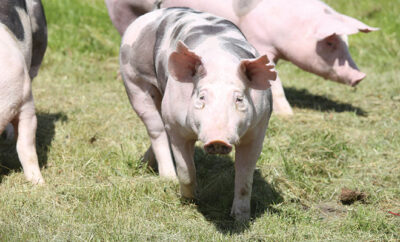
Holiday Traditions and the Calendar
Days grow shorter in the northern hemisphere as the planet spins toward the winter solstice. This season has inspired many traditions; there are at least 14 religious celebrations that are timed to the winter calendar. Let’s take a quick trip back in time and around the world to learn the origins of modern holidays.
Imagine a time before people had language or written history. Each year the seasons of spring and summer were followed by the autumn harvest. And then, as the cold winter approached, each day the sun would rise later and set earlier. There was less and less daylight and less warmth from the sun.
How did primitive tribes deal with this change? Mankind learned to survive by observing the outside world—weather, climate and seasons. What if the sun, the giver of life and light, actually disappeared forever?
And yet, each year, the shortest day of winter solstice was followed by longer days of sunlight. Over time, people learned that spring followed winter as surely as dawn followed nightfall. Even though the word “solstice” has Latin roots meaning “the sun stands still,” people understood that the sun would always return. The winter solstice became a time of celebration, and some of these ancient celebrations have lived on in modern times.
Perhaps the most mysterious origin stores of solstice celebrations began in Ireland and England. Some 5,000 years ago, a burial mound was built in ancient Ireland at New Grange in the Boyne Valley of County Meath. This site was forgotten for centuries until it was unearthed in 1967. The Stone Age structure includes a 62-foot stone passageway with a window near the roof. At the winter solstice, the window aligns with the rising sun in such a way that it slowly illuminates the entire passage. Today, people can observe this in person by applying for a lottery held at the end of September. The 60 people whose names are drawn are allowed inside the passage each morning of the solstice week. It is amazing that people had the knowledge of engineering and astronomy required to build this structure so many thousands of years ago.
In contrast, the megalithic stones of the ancient monument Stonehenge in England are aligned with the winter solstice sunset, rather than the sunrise. The origins of this Neolithic structure are still a mystery. While we do not know how people celebrated at New Grange or Stonehenge, we do know that this season was the time to slaughter cattle and ferment both wine and beer. It’s safe to assume that winter feasts were part of the festivities.
The pagan traditions of the winter solstice eventually merged with religious beliefs. As Christianity spread throughout Europe and Great Britain, the sacred celebration of Christmas was set around the same time as the winter solstice. Christmas traditions incorporated some pagan traditions, such as decorating home and hearth with evergreens and giving gifts. Feast days were often preceded by a day of fasting. Many people around the world still observe a tradition of fasting before a feast day, fasting on Christmas Eve, with a light meal after midnight church services, followed by a feast on Christmas Day.
Most Americans have become familiar with holidays such as Ramadan, Hanukah and Christmas through their Muslim, Jewish and Christian friends, family and coworkers. But few of us have really experienced these holiday traditions. If you’d like to take part in a community immersion experience of other cultures, consider Open Holidays in Jerusalem. For five weeks during November and December, people can learn about different ethnic celebrations in their culturally diverse city. Open Holidays focuses on the traditions of the Ethiopian Jewish festival of Sigd; the birthday of the Prophet Mohammed; Hanukah; Christmas and Novy God (the Russian New Year). People in groups of up to 25 take part in events such as cooking workshops, home hospitality, family religious celebrations and other events. People learn about other cultures in one another’s homes. It is encouraging to know that people in the Middle East, a place known for tensions due to cultural differences, can also embrace and celebrate the holidays of other people and ethnicities.
Solstice traditions in India and China are also celebrated with feasts and family gatherings. In India, the Lohri Festival originally celebrated the longest night of the year; in modern times, the date has moved to the last day of the month of winter solstice. In China, the transition to longer days is marked by the Dongzhi Festival celebrating the arrival of winter. In both these festivals, families gather to enjoy traditional foods.
As you go about the holiday season, consider that the way you celebrate may have roots in ancient times. If experiencing another culture’s traditions interests you, why not organize an event similar to Open Holidays where you live? ■
Sources: ireland.com, time.com and timesofisrael.com.







